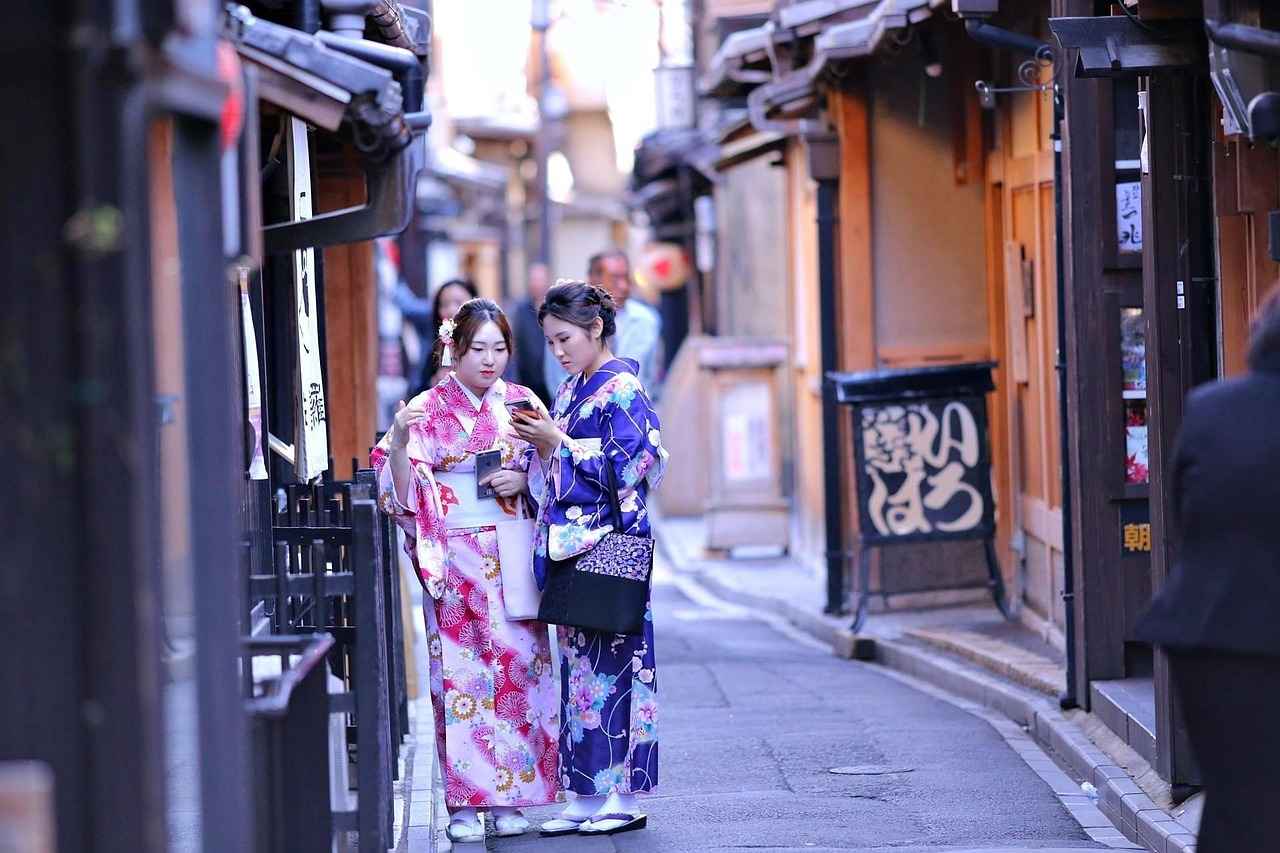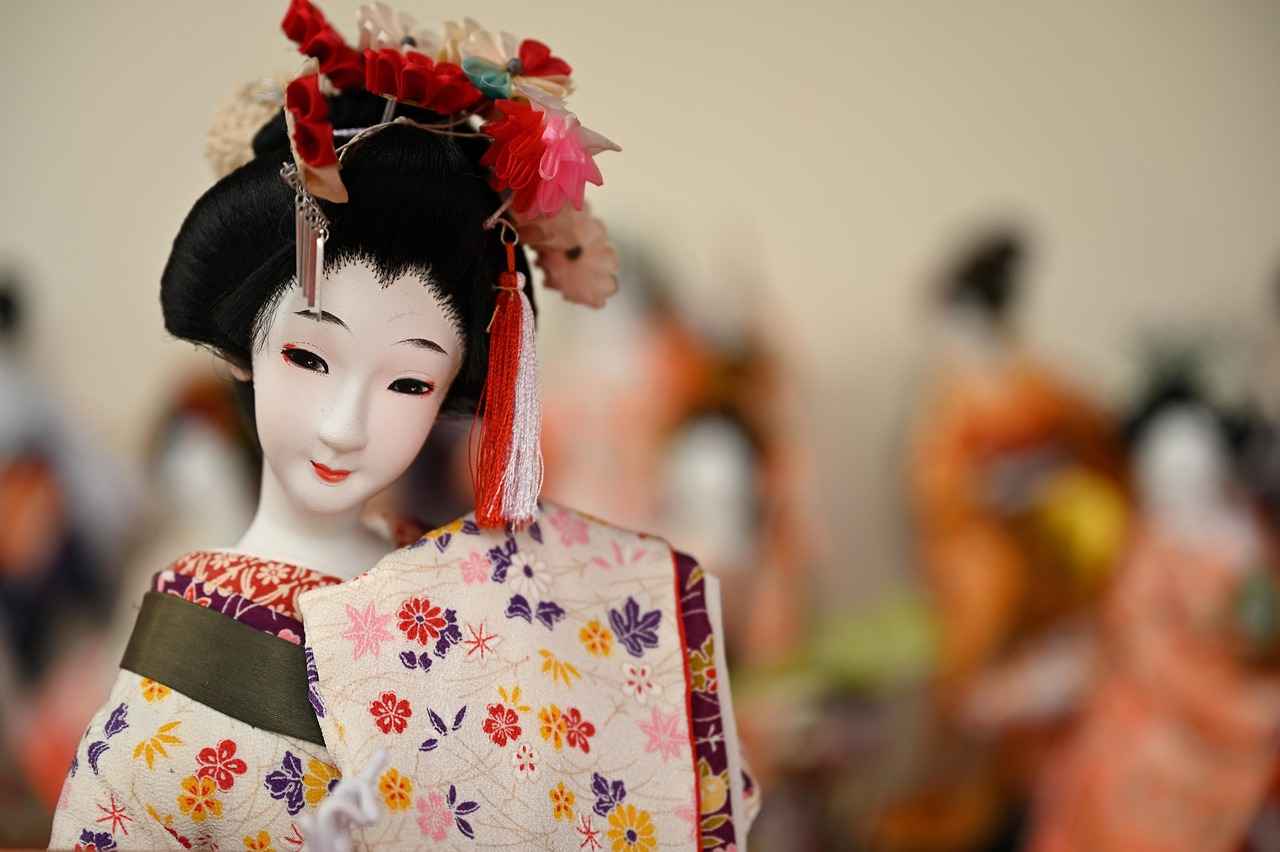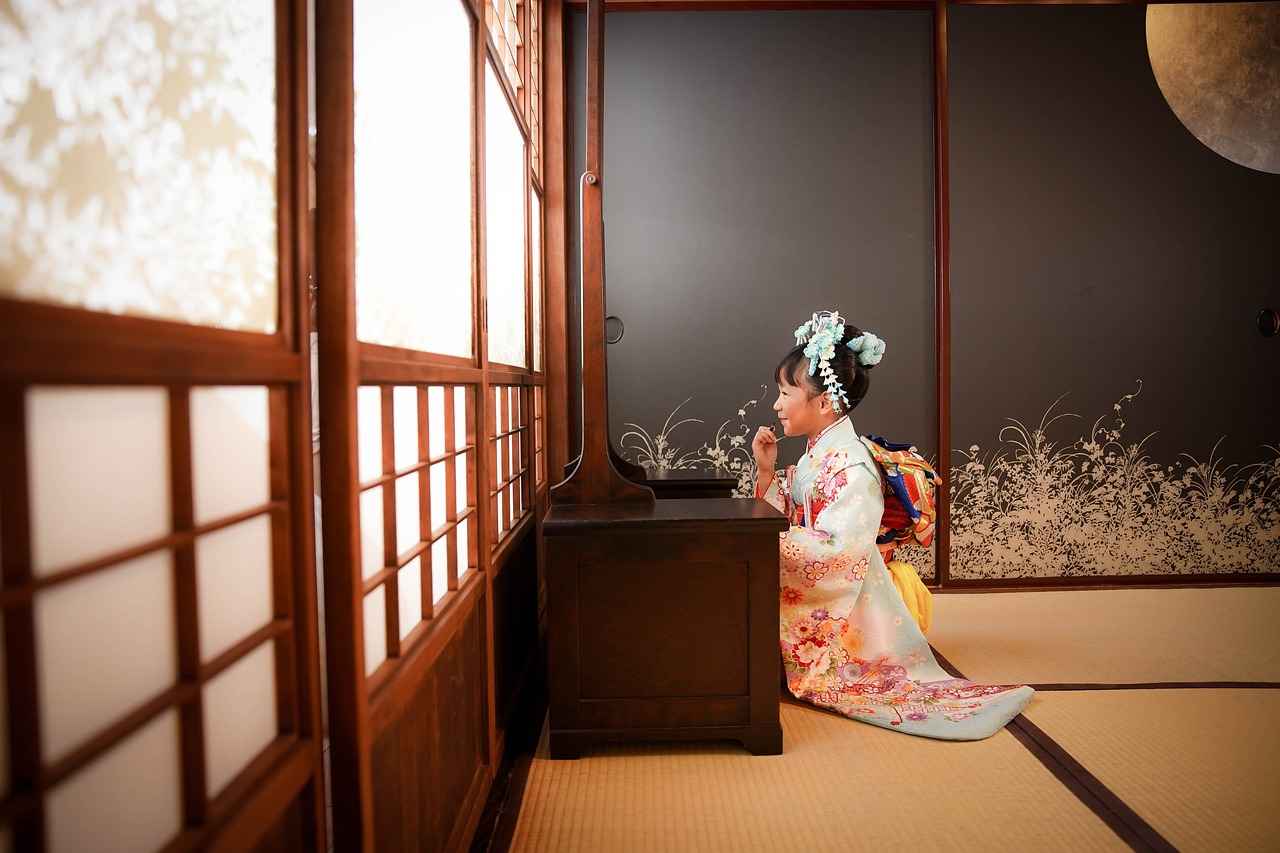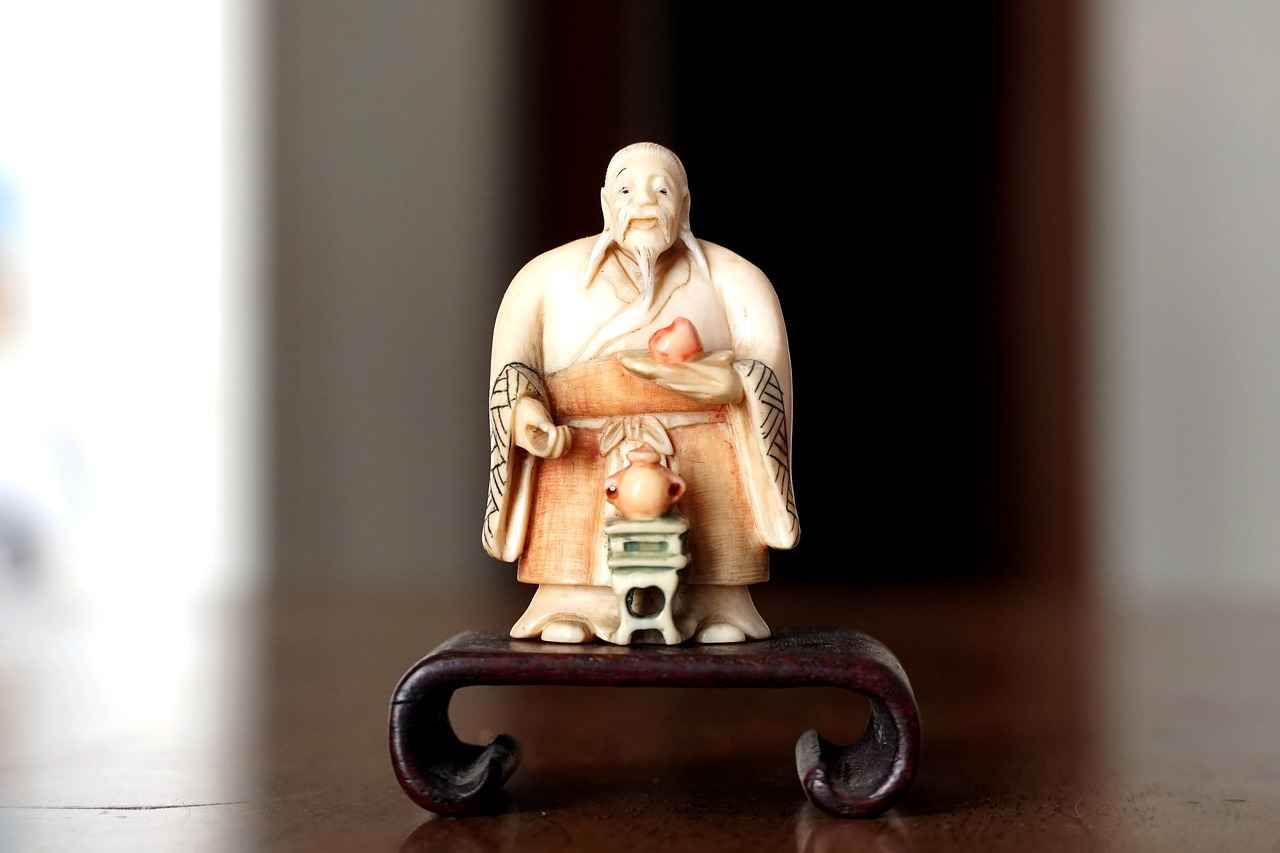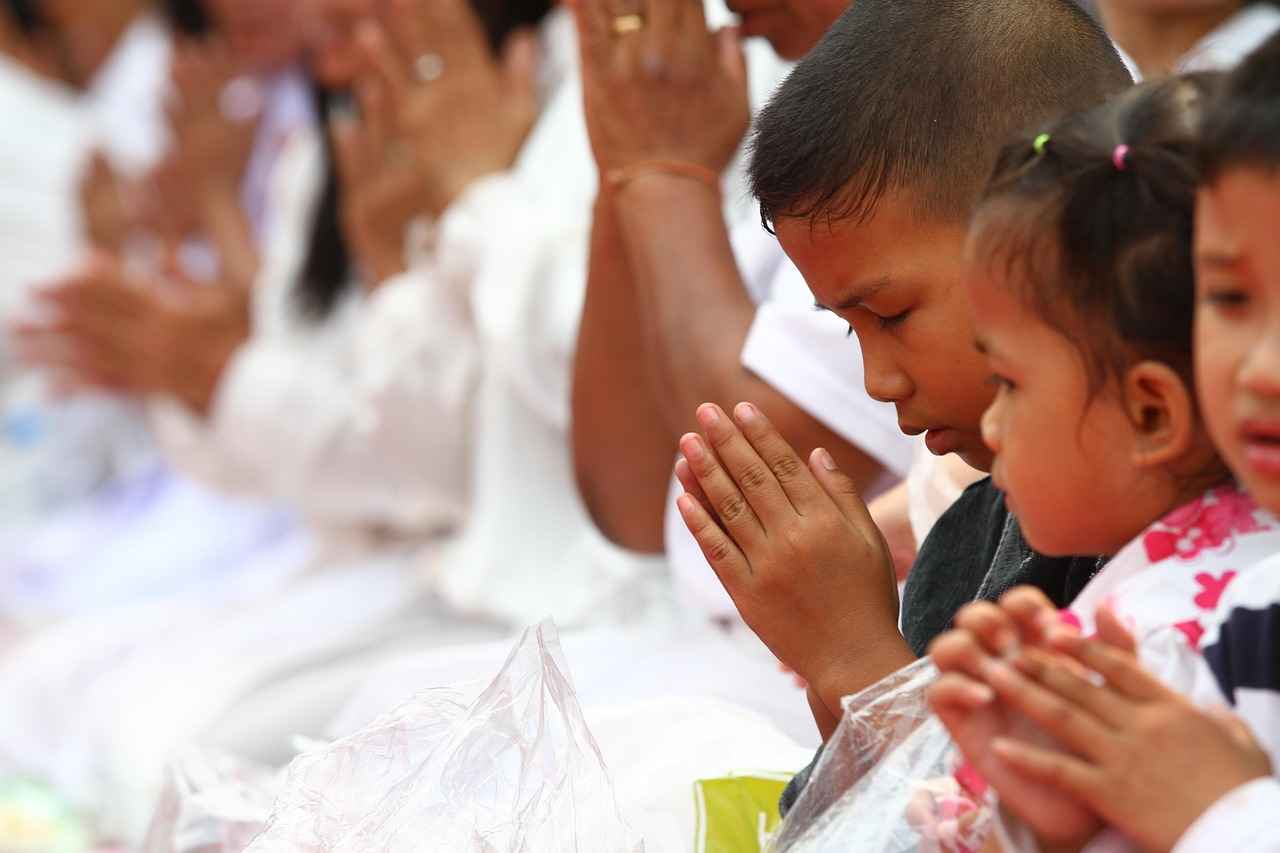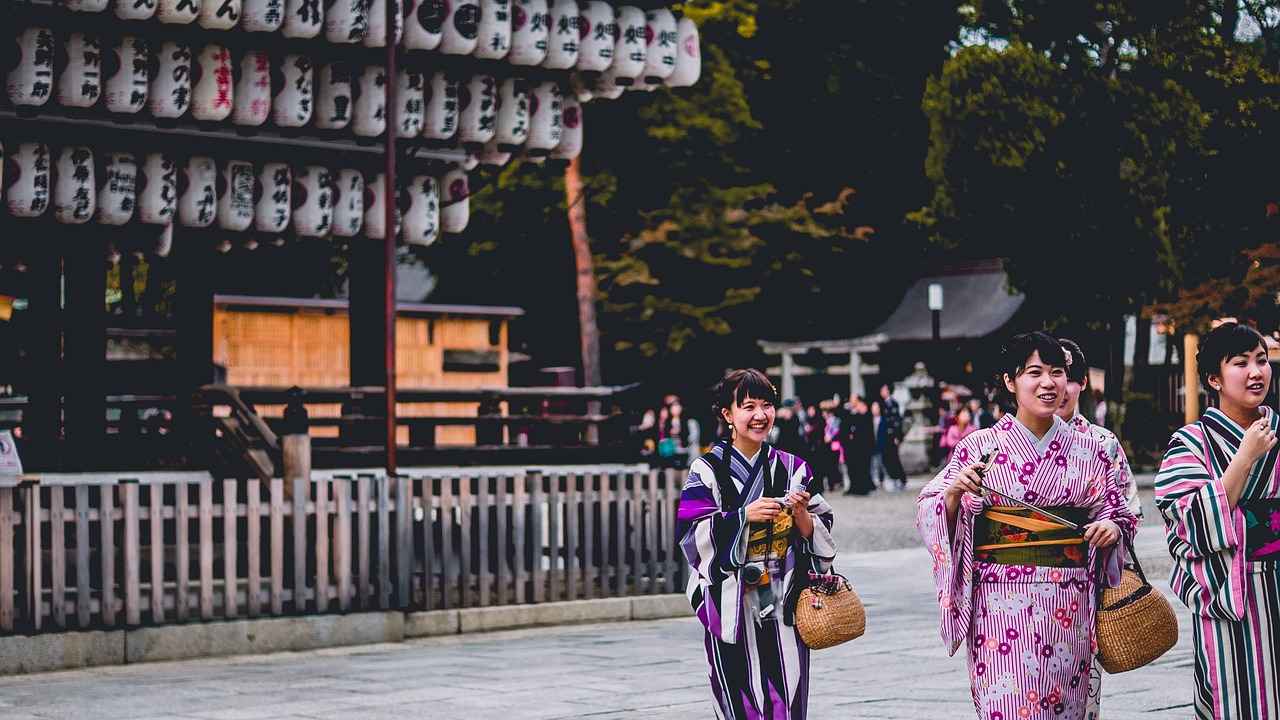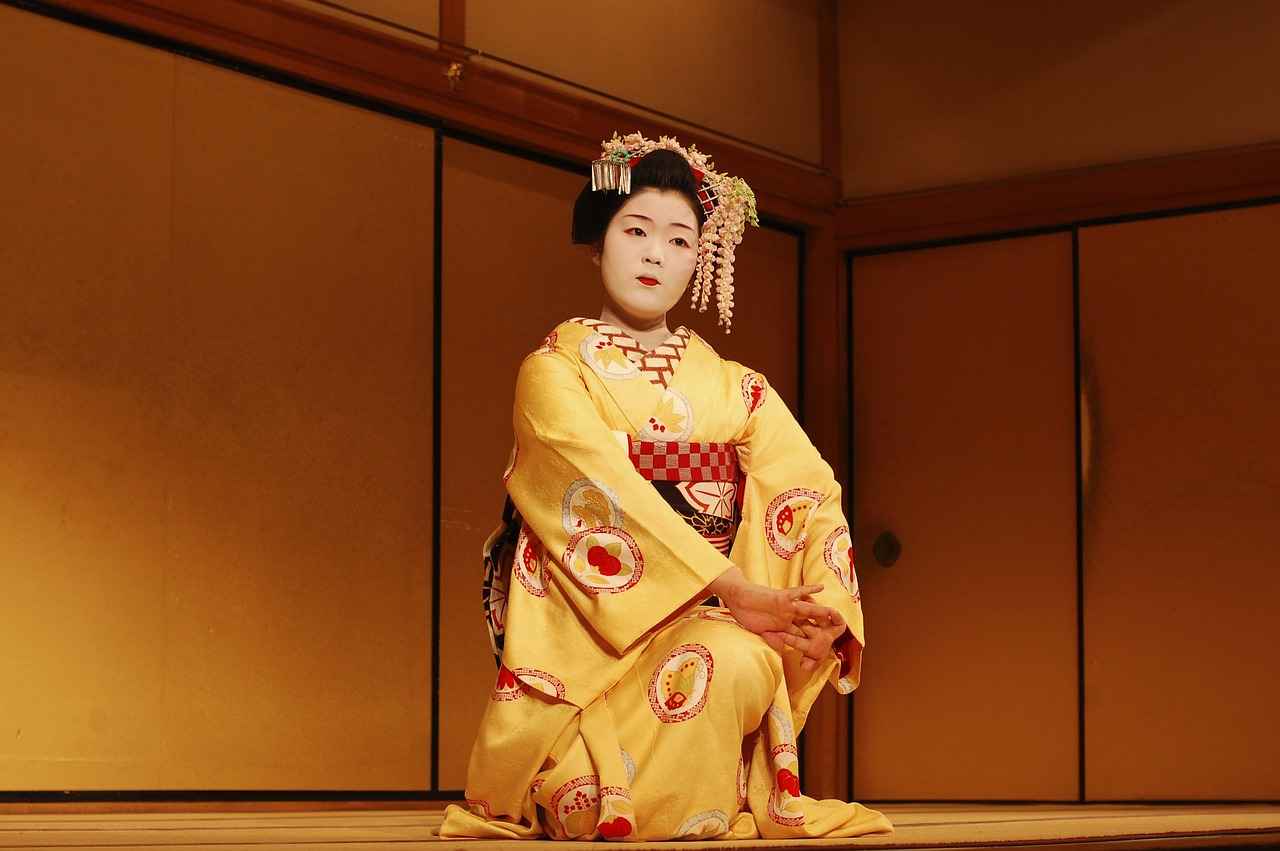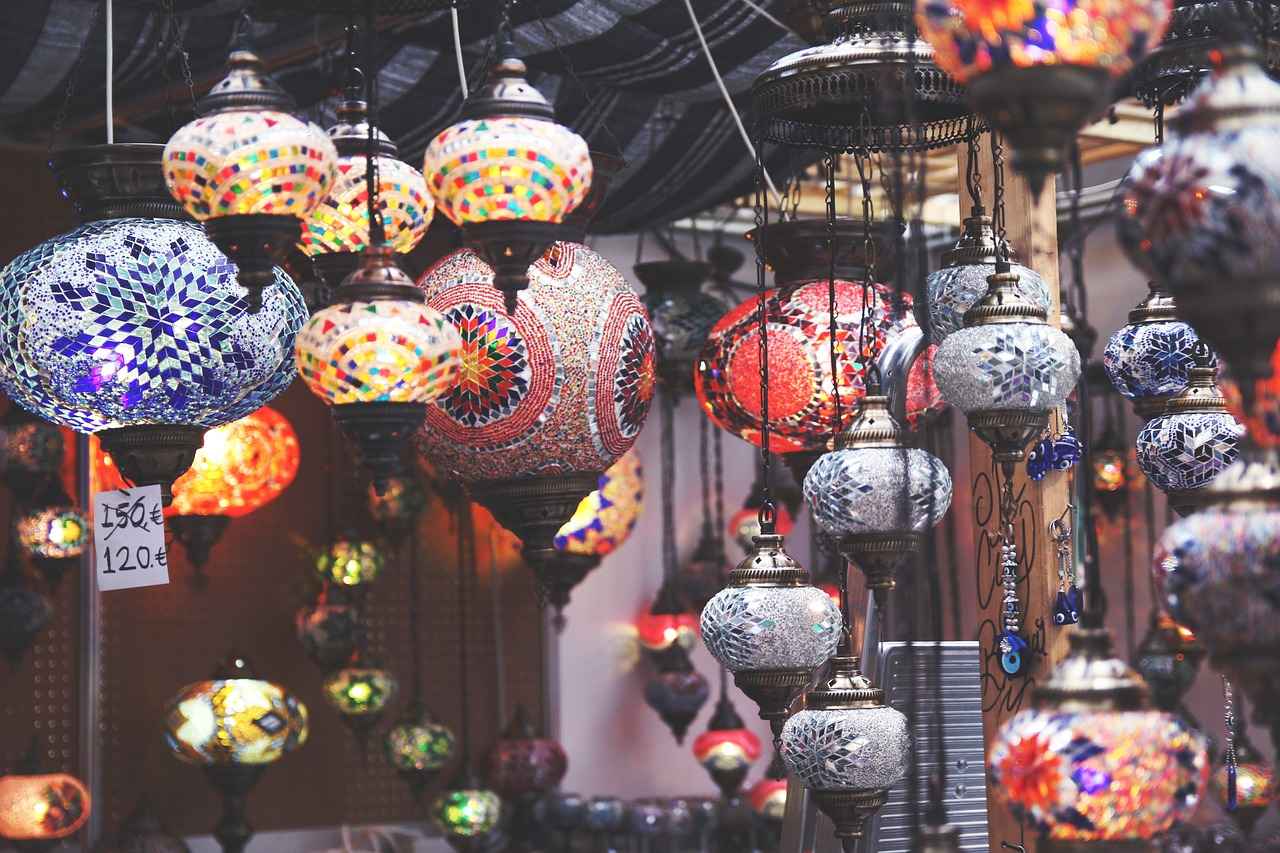This article explores the significance of the kimono in Japanese culture, focusing on its use in various ceremonies and festivals, highlighting its historical importance and contemporary relevance.
The kimono, a traditional garment of Japan, has evolved significantly over the centuries. Its roots can be traced back to the Heian period (794-1185), where it was primarily a symbol of status and identity. As Japan transitioned through various eras, the kimono adapted in style and function, reflecting the changing societal norms and cultural values. Today, it remains a vital aspect of Japanese heritage, especially in ceremonial contexts.
Types of Kimonos Used in Ceremonies
- Formal Kimonos: These are often worn during significant events such as weddings and tea ceremonies. The shiro-muku, a pure white kimono, is particularly notable for brides, symbolizing purity and new beginnings.
- Festival Kimonos: During traditional festivals, kimonos adorned with vibrant colors and seasonal motifs are common, showcasing the beauty of nature and cultural celebrations.
Colors and Their Meanings
Colors in kimonos carry deep meanings. For example, red signifies happiness and good fortune, while white represents purity. Understanding these color associations enriches the experience of wearing a kimono during ceremonies.
Kimono Etiquette in Ceremonies
Wearing a kimono involves adhering to specific etiquette that reflects respect for tradition. This includes understanding how to properly wear the garment, which involves careful layering and tying techniques.
Modern Adaptations of the Kimono
While the kimono is deeply rooted in tradition, it has also adapted to contemporary fashion. Modern designers are fusing traditional elements with current trends, making the kimono more accessible and appealing to younger generations.
The Future of the Kimono in Japanese Culture
As society continues to evolve, the kimono’s role in Japanese culture will likely transform as well. Its enduring significance in ceremonies and festivals suggests that it will remain a cherished symbol of heritage for years to come.
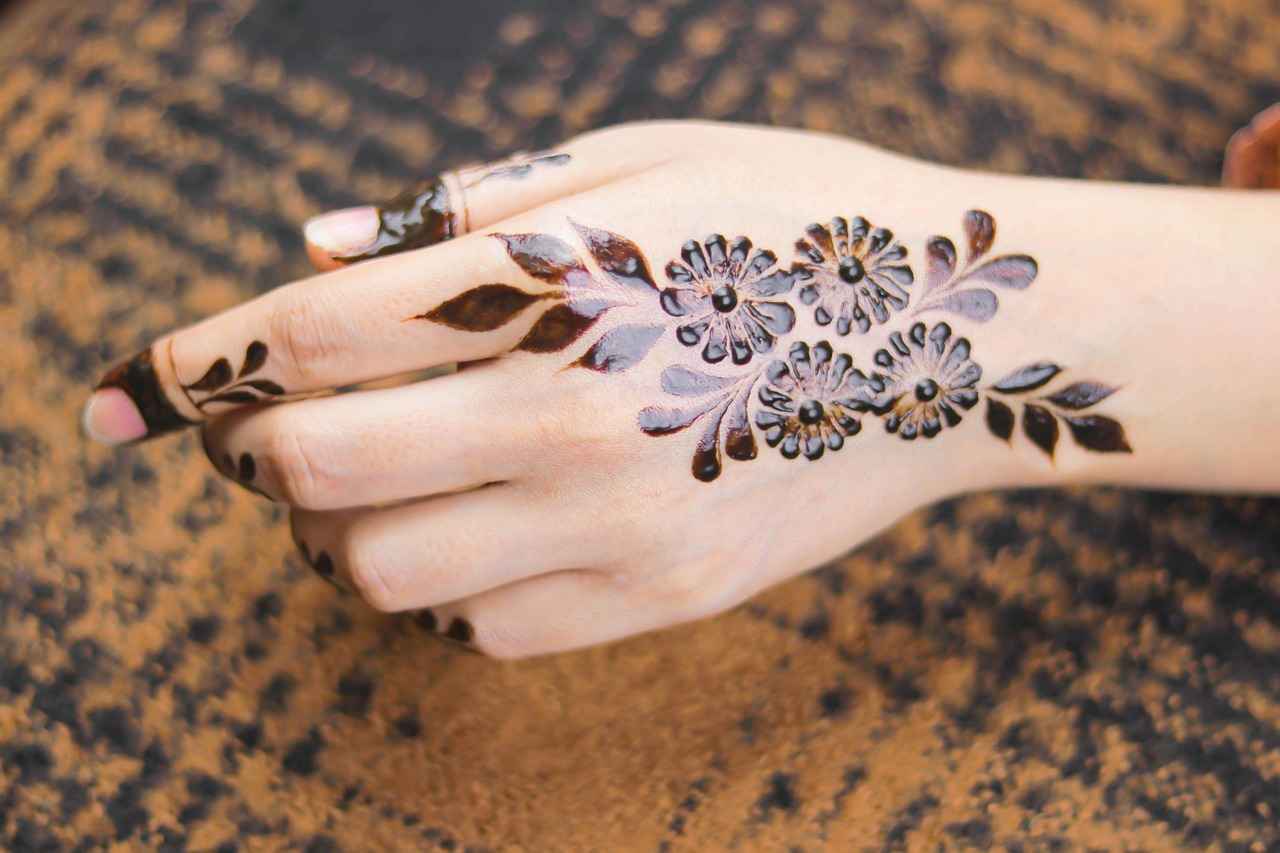
Historical Significance of the Kimono
The kimono, a traditional garment of Japan, is not just a piece of clothing but a symbol of the country’s rich cultural heritage. Its historical significance is deeply intertwined with the evolution of Japanese society, reflecting changes in fashion, social status, and cultural practices over centuries. The origins of the kimono can be traced back to the Heian period (794-1185), where it began as a simple garment. As time progressed, it transformed into various styles, each representing different societal roles and occasions.
Throughout the Edo period (1603-1868), the kimono became a canvas for artistic expression, showcasing intricate designs and vibrant colors that conveyed messages about the wearer’s identity and status. The fabrics used, such as silk and cotton, along with the elaborate patterns, played a crucial role in defining the wearer’s social standing. For instance, the use of specific motifs was often reserved for nobility, while commoners wore more subdued designs.
In modern Japan, the kimono continues to hold significant cultural importance, especially during ceremonies and festivals. Understanding its historical roots allows individuals to appreciate the nuances of its use today. For example, during traditional weddings, the bride often wears a shiro-muku, a white kimono symbolizing purity, while the groom might don a montsuki, a formal black kimono. These garments are not merely fashion choices; they are steeped in history and meaning.
Moreover, festivals such as Hanami (cherry blossom viewing) and Tanabata (star festival) feature colorful kimonos that celebrate seasonal changes and cultural traditions. The vibrant patterns and colors worn during these events reflect the joy and communal spirit of the celebrations.
In summary, the kimono’s deep historical roots and its evolution over time illustrate its profound connection to Japanese culture. As society continues to evolve, so does the kimono’s role, ensuring that it remains a vital part of Japan’s cultural fabric.
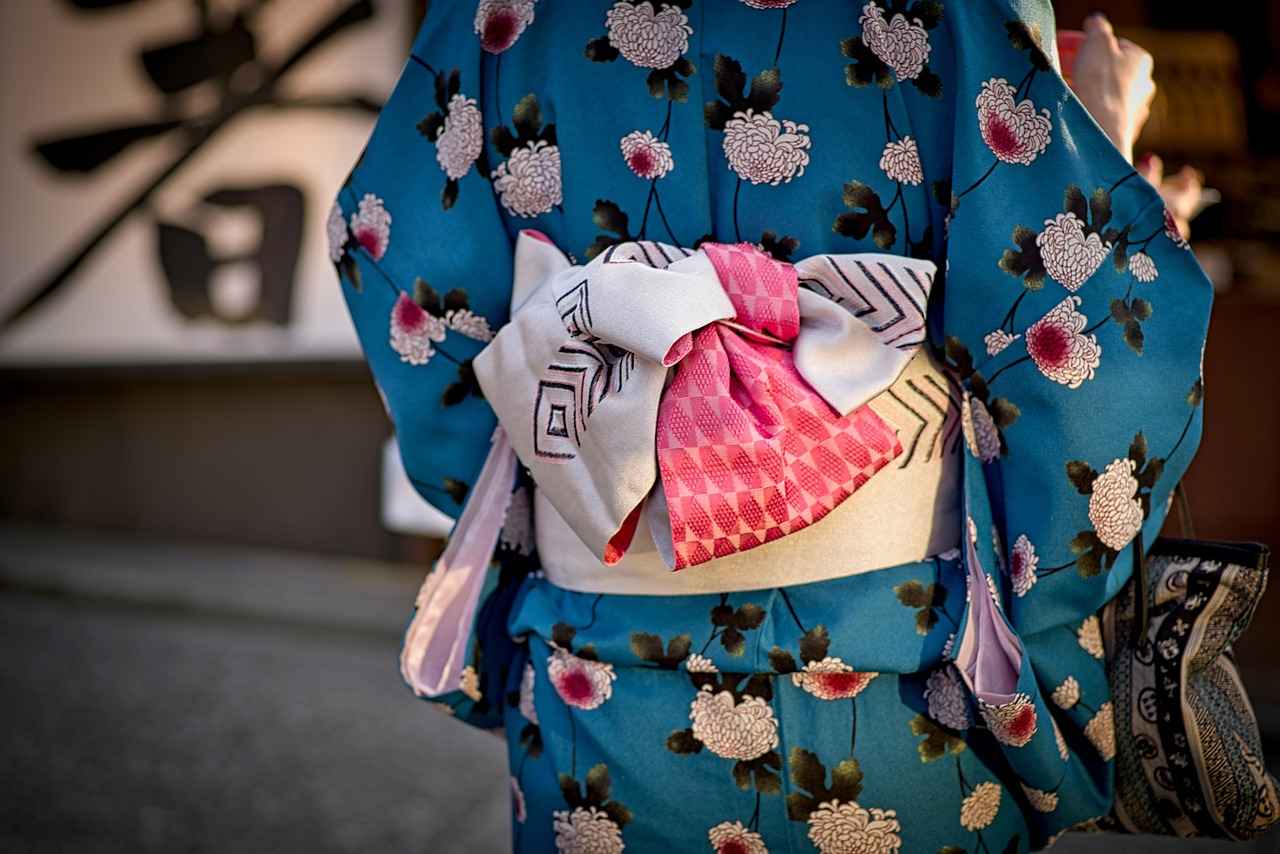
Types of Kimonos Used in Ceremonies
The kimono, a traditional garment of Japan, is not merely a piece of clothing but a representation of culture, history, and identity. In the context of ceremonies, different types of kimonos serve specific purposes, each distinguished by unique fabrics, colors, and designs. These variations symbolize various cultural meanings and occasions, making the kimono an integral part of Japanese ceremonial life.
Formal Kimonos: A Reflection of Tradition
In formal settings, such as weddings and tea ceremonies, kimonos are crafted from luxurious fabrics like silk. The shiro-muku, a pure white kimono worn by brides, signifies purity and new beginnings. In contrast, the tomesode, a formal kimono with intricate designs, is often worn by married women at weddings. The choice of kimono reflects the wearer’s marital status and the ceremony’s significance.
Colors and Their Symbolism
Colors in kimonos are imbued with meaning. For example, red represents happiness and good fortune, while blue is associated with calmness and stability. Each color choice is intentional, conveying the wearer’s sentiments and cultural values during significant life events.
Festival Kimonos: Celebrating Culture
During festivals, kimonos become vibrant expressions of joy and celebration. Styles such as the yukata, a casual summer kimono, are often adorned with seasonal motifs like cherry blossoms or waves, reflecting the beauty of nature and the changing seasons. These garments allow wearers to connect with their cultural heritage while enjoying communal festivities.
Accessories: Enhancing the Kimono Experience
Accessories play a crucial role in complementing kimonos. The obi, a wide belt, is essential for securing the kimono and can vary in style and color, adding a personal touch. Additionally, kanzashi, ornamental hairpieces, enhance the overall aesthetic, showcasing intricate craftsmanship and attention to detail.
In summary, the diverse types of kimonos used in ceremonies highlight the rich tapestry of Japanese culture. Each style, color, and accessory contributes to a deeper understanding of the significance behind these beautiful garments, ensuring that the kimono remains a cherished symbol of tradition and identity in contemporary Japan.
Formal Kimonos for Weddings
Weddings in Japan are not just a union of two individuals; they are a celebration steeped in tradition and cultural significance. One of the most striking elements of a Japanese wedding is the kimono, particularly the bride’s attire. The bride typically wears a white kimono known as shiro-muku, symbolizing purity and the start of a new life.
The shiro-muku is often complemented by a colorful obi (sash) and various traditional accessories, enhancing the overall elegance of the attire. The choice of a white kimono signifies the bride’s commitment to her future husband and her family, representing a blank canvas for her new life.
Moreover, the kimono’s design plays a crucial role in conveying messages of prosperity and happiness. For instance, kimonos may feature intricate patterns and motifs that symbolize good fortune, such as cranes or cherry blossoms. Each element is meticulously chosen to reflect the family’s wishes for the couple’s future.
| Type of Kimono | Symbolism |
|---|---|
| Shiro-muku | Purity and new beginnings |
| Uchikake | Colorful, extravagant style for the reception |
In addition to the kimono itself, the bride’s accessories also hold cultural significance. The kanzashi (hair ornaments) and obi are not merely decorative; they represent various aspects of a woman’s life and her transition into marriage.
As weddings evolve, some brides opt for modern interpretations of the kimono, blending traditional elements with contemporary styles. Nonetheless, the essence of the kimono remains intact, serving as a powerful symbol of Japanese culture and the sanctity of marriage.
In conclusion, the formal kimono worn during weddings is more than just clothing; it embodies rich cultural traditions and personal significance. Each detail, from the fabric to the accessories, tells a story of love, commitment, and heritage.
shiro-muku.
The Role of the Kimono in Japanese Ceremonies and Festivals
This article explores the significance of the kimono in Japanese culture, focusing on its use in various ceremonies and festivals, highlighting its historical importance and contemporary relevance.
Historical Significance of the Kimono
The kimono has deep historical roots in Japan, evolving through various periods and reflecting societal changes. Understanding its origins helps appreciate its role in modern ceremonies and festivals.
Types of Kimonos Used in Ceremonies
- Formal Kimonos for Weddings: Weddings in Japan often feature elaborate kimonos, with the bride typically wearing a white kimono called shiro-muku. This section explores the significance of colors and styles in wedding ceremonies.
- Festival Kimonos: Festivals showcase vibrant and colorful kimonos, often adorned with seasonal motifs. This section examines the various styles worn during traditional Japanese festivals.
Colors and Their Meanings
Colors in kimonos hold symbolic meanings. For instance, red is associated with happiness and good fortune, while white represents purity. This section delves into the importance of color choice in ceremonial attire.
Accessories and Adornments
Accessories like obis and kanzashi enhance the kimono’s appearance. This part discusses how these elements contribute to the overall aesthetic and cultural significance during weddings.
Kimono Etiquette in Ceremonies
Wearing a kimono comes with specific etiquette that reflects respect for tradition. This section outlines the dos and don’ts when wearing kimonos during ceremonies.
How to Properly Wear a Kimono
Wearing a kimono involves a precise method, including layering and tying techniques. This part provides a step-by-step guide for proper kimono attire.
Respecting Cultural Traditions
Understanding the cultural significance of the kimono enhances the experience of wearing one. This section emphasizes the importance of respecting traditions in ceremonial contexts.
Modern Adaptations of the Kimono
While rooted in tradition, the kimono has adapted to contemporary fashion. This section explores how modern designs influence its use in ceremonies and festivals today.
Fusion Styles in Contemporary Fashion
Contemporary designers are blending traditional kimono elements with modern fashion trends. This part highlights popular fusion styles that maintain cultural relevance while appealing to younger generations.
Kimono in Global Fashion Trends
The kimono has gained popularity beyond Japan, influencing global fashion. This section discusses its impact on international fashion, showcasing its versatility and appeal.
The Future of the Kimono in Japanese Culture
As society evolves, so does the kimono’s role in Japanese culture. This conclusion reflects on its enduring significance and potential future developments in ceremonies and festivals.
This section explores the significance of colors and styles in wedding ceremonies.
The kimono is an iconic garment in Japanese culture, particularly significant in wedding ceremonies. This section explores the significance of colors and styles in these important events, highlighting how they contribute to the overall meaning and aesthetic of the ceremony.
| Color | Meaning |
|---|---|
| White | Purity and simplicity, often worn by brides as a symbol of new beginnings. |
| Red | Happiness and good fortune, frequently used in wedding decorations and attire. |
| Pink | Romance and affection, a popular choice for bridal kimonos. |
| Gold | Prosperity and wealth, often seen in the embellishments of ceremonial kimonos. |
In weddings, the bride typically wears a shiro-muku, a white kimono symbolizing purity. This choice reflects the traditional values of the ceremony and the bride’s commitment to starting a new life with her partner. The use of vibrant colors like red and pink in the wedding attire and decorations enhances the celebratory atmosphere, symbolizing joy and a hopeful future.
- Formal Kimonos: These are characterized by intricate designs and elaborate fabrics, often reflecting the family’s status.
- Festival Kimonos: During traditional celebrations, kimonos are adorned with seasonal motifs, showcasing the beauty of nature and cultural heritage.
- Accessories: Items like obis (sashes) and kanzashi (hair ornaments) play a crucial role in enhancing the overall look and significance of the kimono.
Understanding the symbolism behind colors and styles in kimonos not only enriches the wedding experience but also fosters a deeper appreciation of Japanese cultural traditions.
Colors and Their Meanings
The colors used in kimonos are not merely aesthetic choices; they carry profound symbolic meanings that reflect cultural values and beliefs. Understanding these meanings enhances the appreciation of kimonos, especially in ceremonial contexts.
For example, red is a color that embodies happiness and good fortune. It is often worn during celebrations and joyous occasions, such as weddings and festivals. In contrast, white represents purity and is traditionally worn by brides during their wedding ceremonies, signifying a fresh start and new beginnings.
Other colors also hold significant meanings. Pink, for instance, symbolizes charm and innocence, making it a popular choice for young girls’ kimonos. Blue is often associated with calmness and stability, while green represents growth and harmony, reflecting the beauty of nature. Black, although sometimes seen as a color of mourning, can also signify elegance and sophistication when paired with vibrant patterns.
When selecting a kimono for a specific ceremony, the choice of color is crucial. Each color can evoke different emotions and convey various messages to the wearer and the audience. For instance, during the Shichi-Go-San festival, children wear kimonos in colors that symbolize growth and prosperity, reflecting the cultural significance of this rite of passage.
In conclusion, the importance of color choice in ceremonial attire cannot be overstated. Each hue carries its own story and significance, making the kimono not just a garment, but a vibrant expression of Japanese culture and tradition.
Accessories and Adornments
In the realm of traditional Japanese weddings, the kimono is not merely a garment; it is a profound symbol of culture and heritage. Among the various elements that enhance the kimono’s elegance, accessories such as obis and kanzashi play a crucial role. These adornments not only elevate the aesthetic appeal of the kimono but also carry significant cultural meanings.
The obi, a wide belt that wraps around the waist, is often intricately designed and can vary in color, fabric, and style. It serves as a focal point that accentuates the overall look of the kimono. In weddings, the obi is usually crafted from luxurious materials and adorned with beautiful patterns that symbolize prosperity and happiness. The way the obi is tied also reflects the wearer’s status and the formality of the occasion, making it a vital component of the wedding attire.
On the other hand, kanzashi are ornamental hairpieces that add a touch of grace and sophistication to the bride’s appearance. Traditionally made from materials like silk, metal, and ceramic, these hair ornaments can take various forms, including flowers, leaves, and seasonal motifs. Each kanzashi design holds its own significance, often representing good fortune, beauty, and the changing of seasons. During weddings, the choice of kanzashi is particularly important, as it complements the kimono and reflects the bride’s personality and family heritage.
Moreover, the combination of these accessories contributes to the overall aesthetic and cultural significance of the kimono during weddings. They not only enhance the visual appeal but also serve as a reminder of the rich traditions and values embedded in Japanese culture. By carefully selecting and wearing these adornments, brides honor their heritage while embracing the beauty of their special day.
In conclusion, the role of obis and kanzashi extends beyond mere decoration; they are integral to the kimono’s identity and the cultural narrative of Japanese weddings. Their thoughtful incorporation into bridal attire showcases the deep respect for tradition and the celebration of love.
Festival Kimonos and Their Styles
In Japan, festivals are a vibrant celebration of culture, tradition, and community. A key aspect of these festivities is the kimono, a traditional garment that reflects the beauty and artistry of Japanese heritage. During festivals, kimonos are often adorned with colorful patterns and seasonal motifs, showcasing the rich tapestry of Japanese aesthetics.
Festival kimonos, known as yukata in the summer months, are typically made from lighter fabrics, making them comfortable for outdoor events. These garments are often characterized by their bright colors and floral designs, which symbolize the changing seasons. For example, cherry blossoms are a popular motif during spring festivals, while vibrant autumn leaves are favored in the fall.
Different regions of Japan have their own unique styles of festival kimonos. For instance, the Hokkaido region is known for its bold colors and intricate patterns, while Kyoto kimonos often feature more subdued tones and delicate designs. This regional diversity adds to the richness of the festival experience, allowing participants to express their local identity.
- Yukata: A casual summer kimono made of cotton, perfect for festivals.
- Hakama: A pleated skirt worn over a kimono, often seen in more formal settings.
- Furisode: A long-sleeved kimono worn by young women, symbolizing youth and elegance.
Accessories play a significant role in enhancing the overall look of festival kimonos. Items such as obi (the sash) and kanzashi (hair ornaments) are carefully chosen to complement the kimono’s design, adding a personal touch to the attire. The choice of accessories can also reflect the wearer’s personality and style, making each outfit unique.
In conclusion, festival kimonos are more than just clothing; they are a vibrant expression of Japanese culture, history, and artistry. As these garments continue to evolve, they remain a beloved part of Japan’s cultural celebrations, connecting the past with the present in a beautiful tapestry of tradition.
Kimono Etiquette in Ceremonies
Wearing a kimono is not just about donning a beautiful garment; it is a reflection of Japanese culture and tradition. The etiquette associated with wearing a kimono during ceremonies is essential for showing respect to the customs and the occasion itself. This section aims to provide a comprehensive overview of the dos and don’ts when wearing kimonos in ceremonial settings.
| Dos | Don’ts |
|---|---|
| Wear the Right Type of Kimono: Choose a kimono that is appropriate for the ceremony, such as a formal kimono for weddings or a colorful one for festivals. | Don’t Mix Styles: Avoid combining different styles or types of kimonos, as this can be seen as disrespectful. |
| Follow the Correct Dressing Procedure: Ensure that you wear the kimono in the proper order, including the right layering and tying techniques. | Don’t Neglect Accessories: Accessories like obis and kanzashi are crucial. Ignoring them can make the outfit appear incomplete. |
| Respect Personal Space: When interacting with others, be mindful of your kimono’s length and how it may affect your movements. | Don’t Wear Casual Footwear: Traditional footwear, such as zori or geta, should be worn to maintain formality. |
Understanding these etiquette guidelines is vital for anyone participating in Japanese ceremonies. By adhering to these dos and don’ts, individuals not only honor the tradition but also enhance their experience and connection to Japanese culture. This respect for tradition deepens the significance of the occasion and fosters a greater appreciation for the art of wearing a kimono.
How to Properly Wear a Kimono
Wearing a kimono is not just about putting on a garment; it is a cultural experience that requires attention to detail and respect for tradition. This section provides a comprehensive step-by-step guide on how to properly wear a kimono, ensuring that you embrace this beautiful aspect of Japanese culture.
- Choosing the Right Kimono: Begin by selecting a kimono that is appropriate for the occasion. Consider the fabric, color, and style. For formal events, opt for a silk kimono, while cotton or synthetic materials are suitable for casual wear.
- Preparing the Under Garments: Before putting on the kimono, wear a juban (under kimono) to protect the outer garment and provide comfort. Ensure it fits well and is properly adjusted.
- Layering the Kimono: Start by putting on the kimono with the left side over the right. This is crucial, as the opposite is reserved for dressing the deceased. Adjust the length so that it sits comfortably above the ankles.
- Tying the Obi: The obi (sash) is an essential part of kimono attire. Wrap the obi around your waist twice, ensuring it is snug but not too tight. Tie it in a knot at the back, or opt for a decorative bow if you’re feeling adventurous.
- Final Adjustments: Once the obi is secured, make any necessary adjustments to the kimono to ensure it drapes beautifully. Check that the sleeves are even and the hem is straight.
- Accessorizing: Complete your outfit with appropriate accessories such as kanzashi (hair ornaments) and a haneri (collar). These elements add a personal touch to your kimono.
By following these steps, you can wear a kimono with confidence and grace, fully appreciating its cultural significance. Embrace the beauty of this traditional attire, and remember that practice makes perfect. Enjoy the process of learning and wearing a kimono!
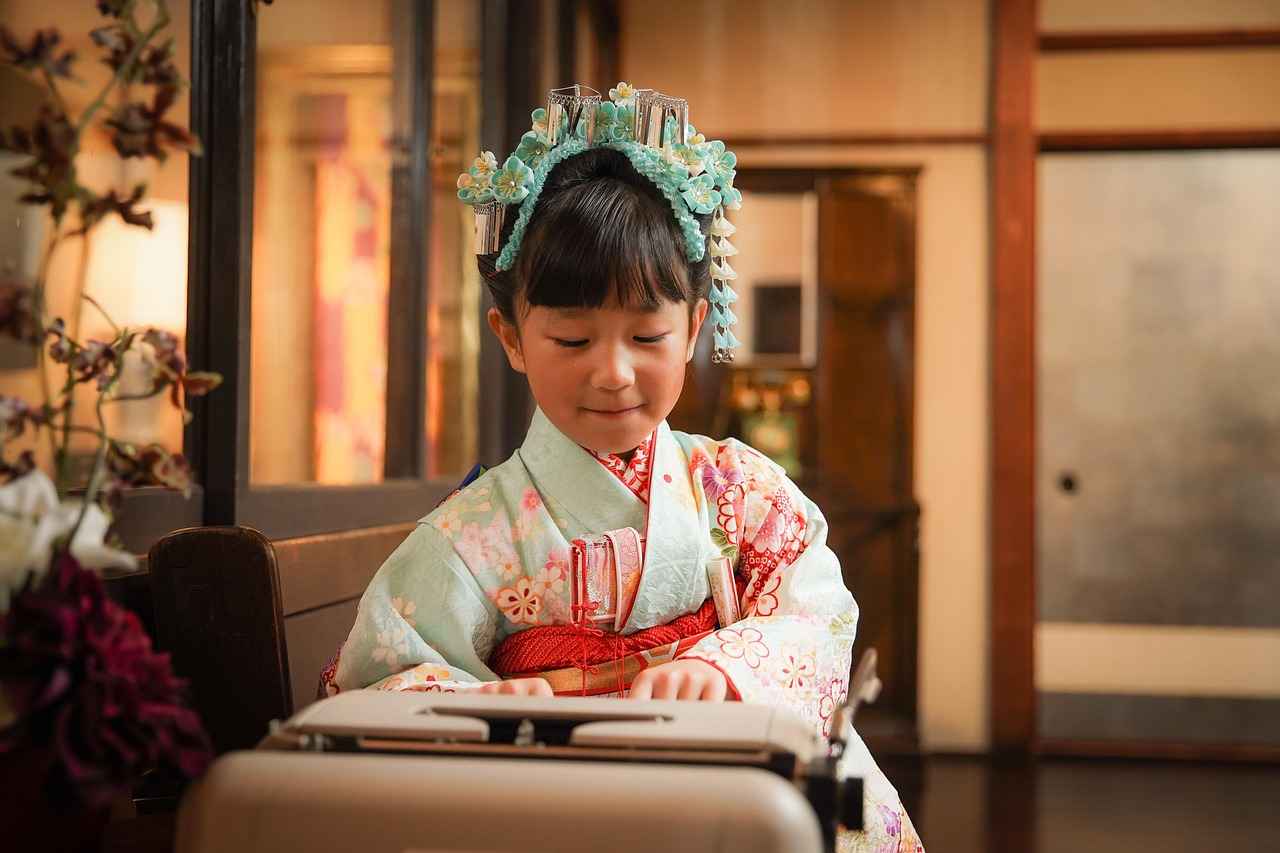
Respecting Cultural Traditions
is essential when it comes to wearing the kimono, a garment that embodies centuries of Japanese culture and history. The kimono is not merely a piece of clothing; it is a symbol of identity, tradition, and respect for the past. Understanding its significance enhances not only the experience of wearing one but also the appreciation of Japanese cultural heritage.
The kimono is often worn during important ceremonies and festivals, where its cultural significance is magnified. From weddings to tea ceremonies, each occasion demands a different style and color of kimono, reflecting the event’s nature and the wearer’s status. For instance, during weddings, the bride typically wears a shiro-muku, a white kimono that symbolizes purity and new beginnings. In contrast, vibrant colors are often chosen for festivals, representing joy and celebration.
It is crucial to acknowledge the etiquette associated with wearing a kimono. This includes understanding how to properly wear the garment, which involves specific techniques for layering and tying the obi (sash). A misstep in these practices can be seen as disrespectful to the traditions that the kimono represents.
| Occasion | Kimono Type | Color Significance |
|---|---|---|
| Weddings | Shiro-muku | Purity, New Beginnings |
| Festivals | Furisode | Joy, Celebration |
| Tea Ceremonies | Hōmongi | Respect, Harmony |
Moreover, it is important to recognize the accessories that complement the kimono, such as obi and kanzashi (hair ornaments). These elements are not merely decorative; they carry their own meanings and enhance the overall cultural expression of the attire.
In conclusion, wearing a kimono is an act of honoring Japanese traditions and cultural heritage. By understanding and respecting the customs associated with this beautiful garment, individuals can fully appreciate the depth of meaning behind each stitch and color, enriching their own experience and connection to Japanese culture.
Modern Adaptations of the Kimono
The kimono, a traditional Japanese garment, has undergone significant transformations while remaining deeply rooted in its historical and cultural significance. In recent years, the modern adaptations of the kimono have become increasingly prominent, reflecting contemporary fashion trends and the evolving tastes of society.
As society progresses, the kimono has embraced innovative designs that blend traditional aesthetics with modern elements. This fusion is evident in various styles that incorporate contemporary fabrics, patterns, and cuts, allowing the kimono to appeal to a wider audience, particularly among the younger generation. For instance, designers are experimenting with bold colors and abstract patterns, moving away from the conventional motifs that have historically defined the garment.
Moreover, the rise of street fashion has played a crucial role in popularizing the kimono beyond formal occasions. Many young people now wear kimonos as casual attire, pairing them with modern accessories and footwear. This shift not only revitalizes the garment but also encourages a new appreciation for its cultural roots.
In addition to fashion, the kimono has found its place in various ceremonies and festivals, adapting to the needs of contemporary society. For example, during traditional events, kimonos may now feature a blend of classic and modern styles, allowing wearers to express their individuality while honoring tradition. This adaptability ensures that the kimono remains relevant in today’s fast-paced world.
Furthermore, the global fascination with Japanese culture has led to an increased interest in the kimono outside of Japan. As international designers incorporate kimono elements into their collections, the garment’s influence on global fashion continues to grow, showcasing its versatility and timeless appeal.
In conclusion, the modern adaptations of the kimono illustrate its ability to evolve while maintaining its cultural significance. By embracing contemporary trends, the kimono not only preserves its traditional essence but also secures its place in the future of fashion.
Fusion Styles in Contemporary Fashion
In recent years, the kimono has transcended its traditional roots, becoming a canvas for contemporary designers who blend its iconic elements with modern fashion trends. This innovative fusion not only preserves the cultural significance of the kimono but also makes it appealing to younger generations. As a result, we are witnessing a vibrant evolution of this timeless garment.
One of the most notable trends is the incorporation of streetwear aesthetics into kimono designs. Designers are experimenting with bold colors, oversized silhouettes, and graphic prints, creating a fusion that resonates with the youth. For instance, kimonos are now often paired with casual wear like jeans and sneakers, breaking the traditional barriers of formal attire. This blend allows for a more relaxed and accessible approach to wearing kimonos, making them suitable for everyday occasions.
Another popular trend is the use of sustainable materials in kimono production. As awareness of environmental issues grows, many designers are opting for eco-friendly fabrics and production methods. This shift not only appeals to environmentally conscious consumers but also revitalizes the kimono’s image as a modern garment. By combining traditional craftsmanship with sustainable practices, designers are ensuring that the kimono remains relevant in today’s fashion landscape.
Moreover, the influence of global fashion trends cannot be overlooked. Designers are drawing inspiration from various cultures, incorporating diverse elements into kimono styles. This cross-cultural exchange enriches the kimono’s design, allowing it to appeal to a broader audience while maintaining its cultural heritage.
In conclusion, the fusion of traditional kimono elements with modern fashion trends represents a dynamic shift in how this iconic garment is perceived and worn. By embracing innovation while honoring tradition, contemporary designers are ensuring that the kimono remains a vital part of both Japanese culture and global fashion.
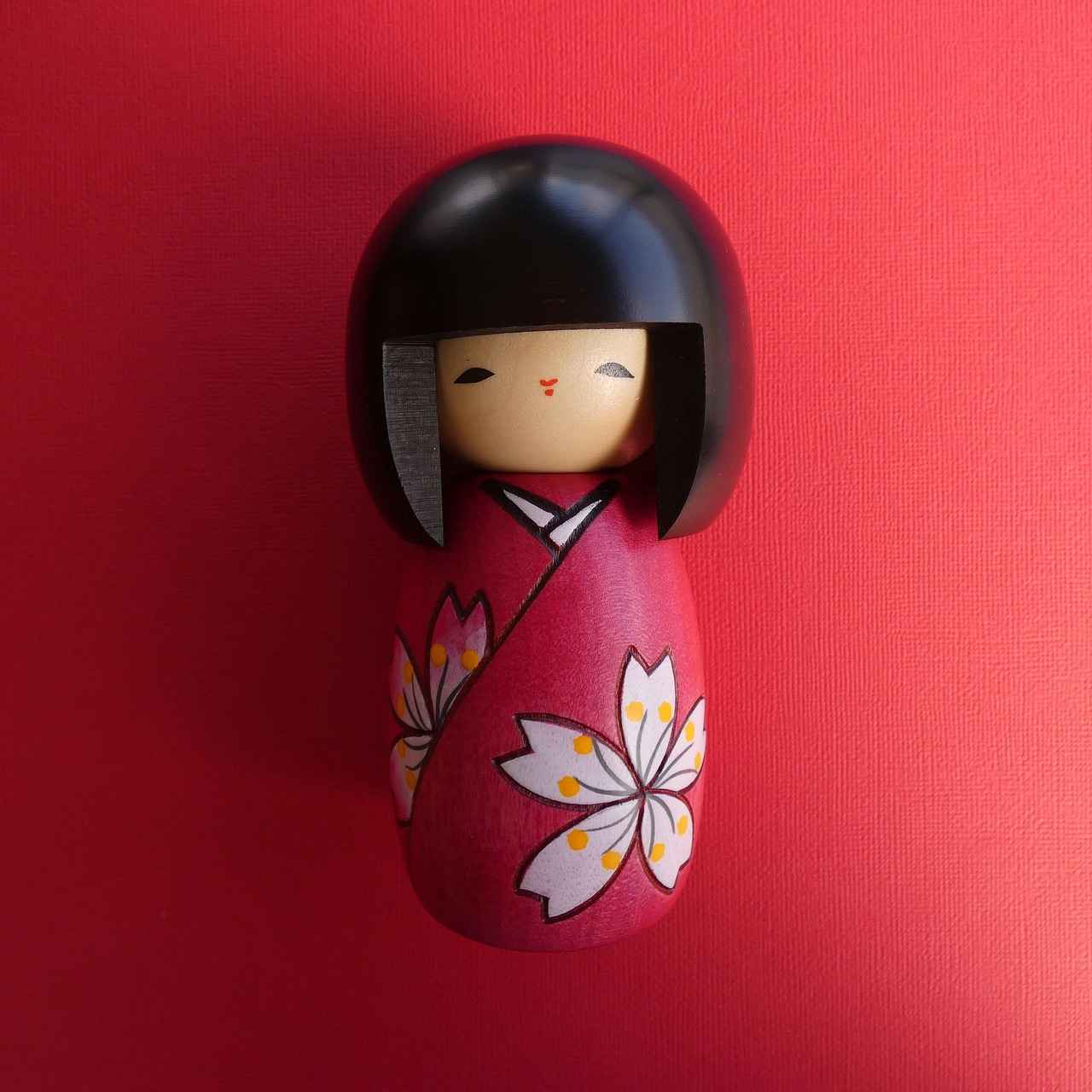
The Future of the Kimono in Japanese Culture
As Japan continues to navigate the complexities of modernity while honoring its rich traditions, the kimono remains a significant cultural symbol. Its evolution reflects the changing societal values and aesthetics, ensuring its relevance in contemporary life. The kimono’s future is poised to be shaped by various factors, including globalization, fashion trends, and a renewed interest in cultural heritage.
Globalization and Cultural Exchange
In an increasingly interconnected world, the kimono has transcended its traditional boundaries. It is now embraced by diverse cultures, leading to a fusion of styles that incorporates elements from Western fashion. This cross-cultural exchange enriches the kimono’s identity, allowing it to evolve while maintaining its core significance.
Contemporary Fashion Trends
Modern designers are reinterpreting the kimono, infusing it with contemporary aesthetics. This includes the use of innovative fabrics, bold patterns, and varied silhouettes. Such adaptations not only appeal to younger generations but also ensure that the kimono remains a viable option for various occasions, from casual outings to formal events.
Renewed Interest in Cultural Heritage
There has been a resurgence of interest in traditional crafts and cultural practices in Japan. This movement encourages the younger generation to appreciate and wear kimonos, especially during significant life events and festivals. Workshops and educational programs are being established to teach the art of kimono wearing and its associated etiquette, fostering a deeper understanding of this cultural treasure.
Conclusion
The kimono’s future in Japanese culture is bright, characterized by a dynamic interplay of tradition and modernity. As society evolves, so too will the kimono, adapting to new contexts while retaining its historical essence. Its enduring significance in ceremonies and festivals ensures that it will continue to be a cherished symbol of Japanese identity for generations to come.
Frequently Asked Questions
- What is the significance of the kimono in Japanese ceremonies?
The kimono is more than just clothing; it’s a symbol of Japanese culture and tradition. In ceremonies, it represents respect, heritage, and the beauty of Japanese artistry. Each kimono worn during these events carries deep cultural meanings, reflecting the occasion’s importance.
- Are there different types of kimonos for various occasions?
Absolutely! Kimonos vary significantly depending on the occasion. For example, weddings often feature formal kimonos like the shiro-muku, while festivals showcase vibrant styles adorned with seasonal motifs. Each type is designed with specific fabrics and colors that convey unique messages.
- How should one properly wear a kimono?
Wearing a kimono involves a specific technique that includes layering and tying. It’s essential to follow the traditional method to honor the garment’s cultural significance. There are step-by-step guides available that can help you master the art of kimono wearing!
- What are some common kimono accessories?
Accessories play a crucial role in enhancing the kimono’s appearance. Items like obis (sashes) and kanzashi (hair ornaments) not only beautify the outfit but also add layers of meaning. These elements are carefully chosen to complement the kimono’s design and the occasion.
- Is the kimono still relevant in modern fashion?
Definitely! The kimono has evolved and adapted to contemporary styles, influencing both Japanese and global fashion trends. Many modern designers incorporate traditional elements into their designs, making the kimono appealing to younger generations while preserving its cultural roots.
